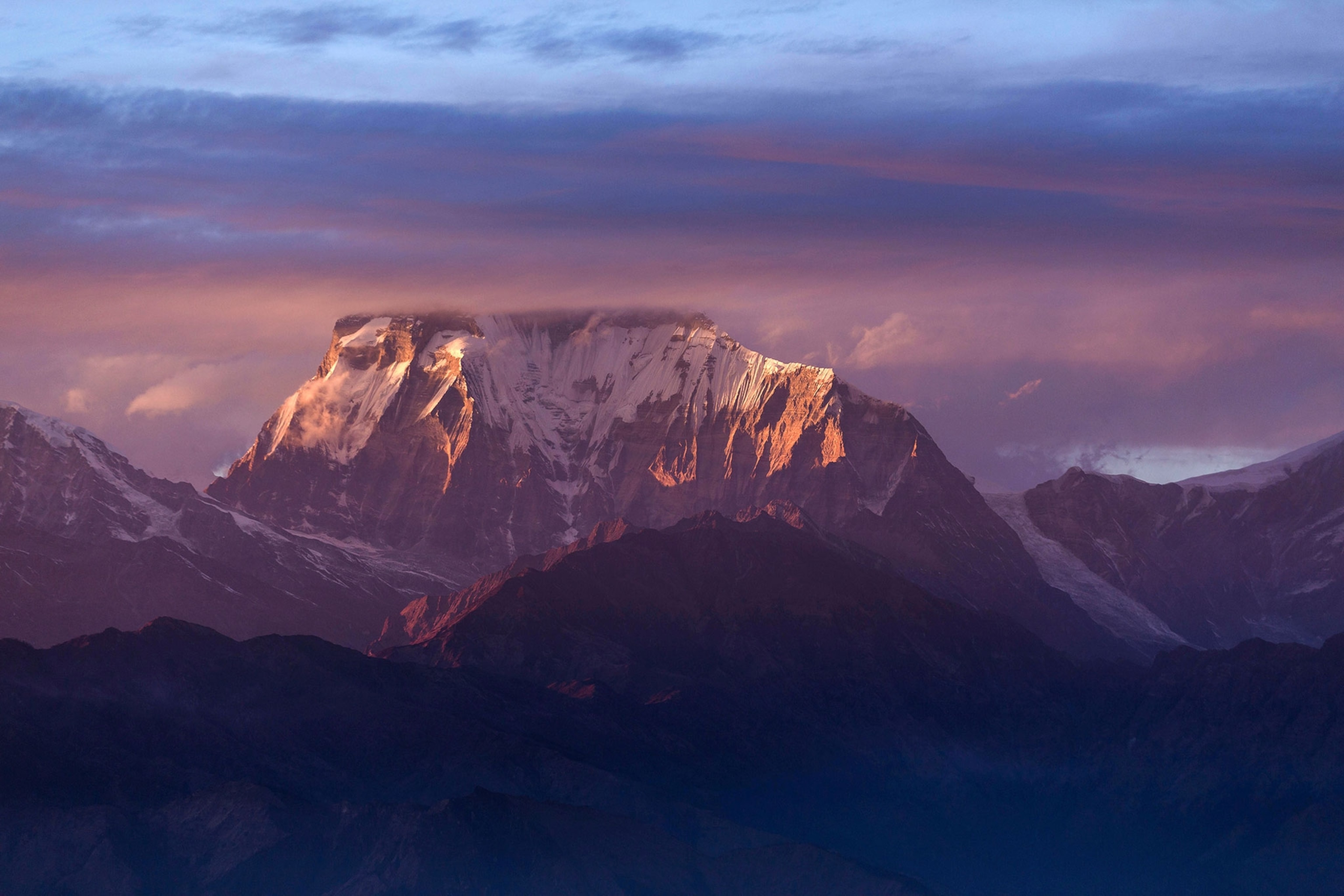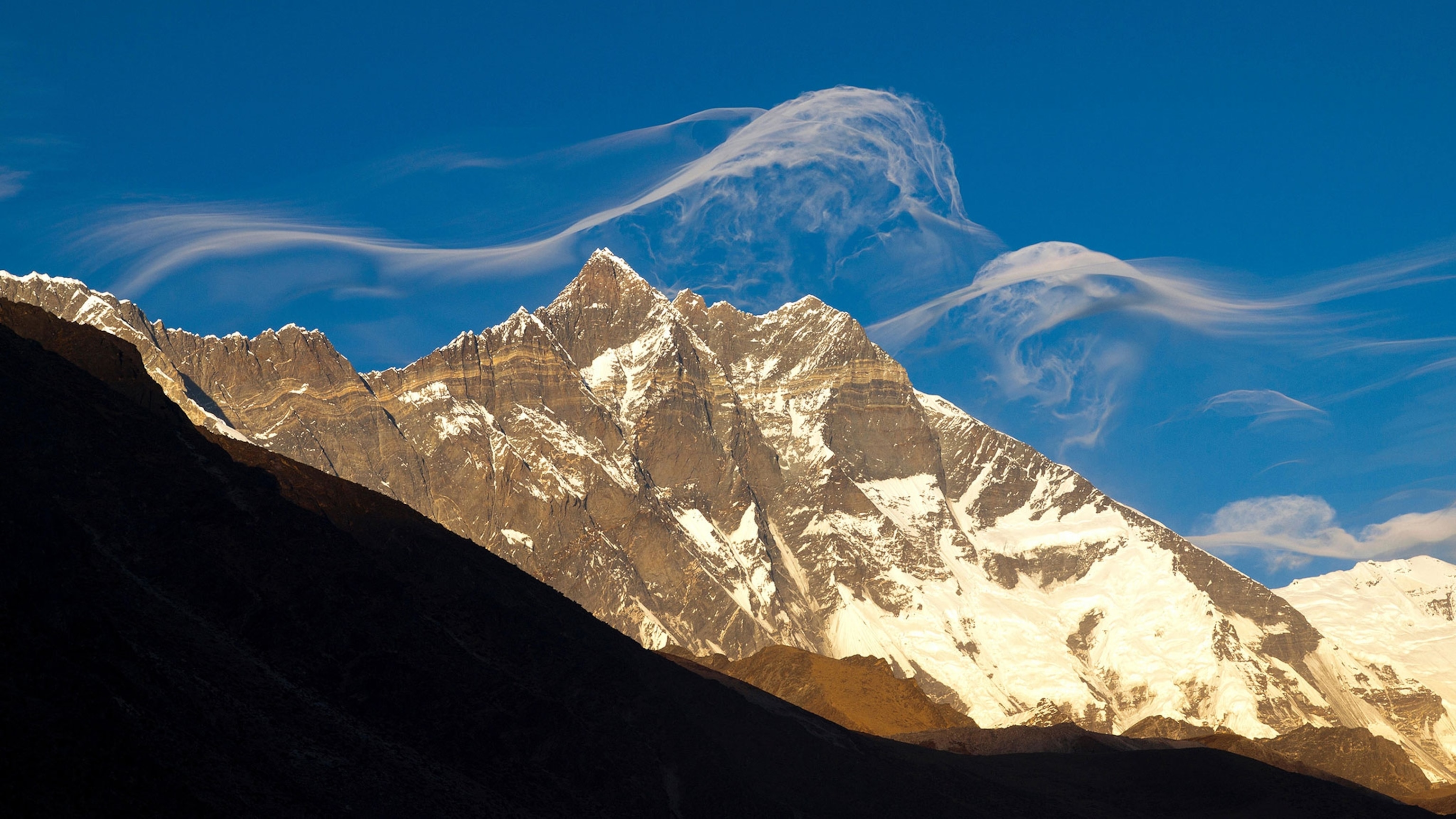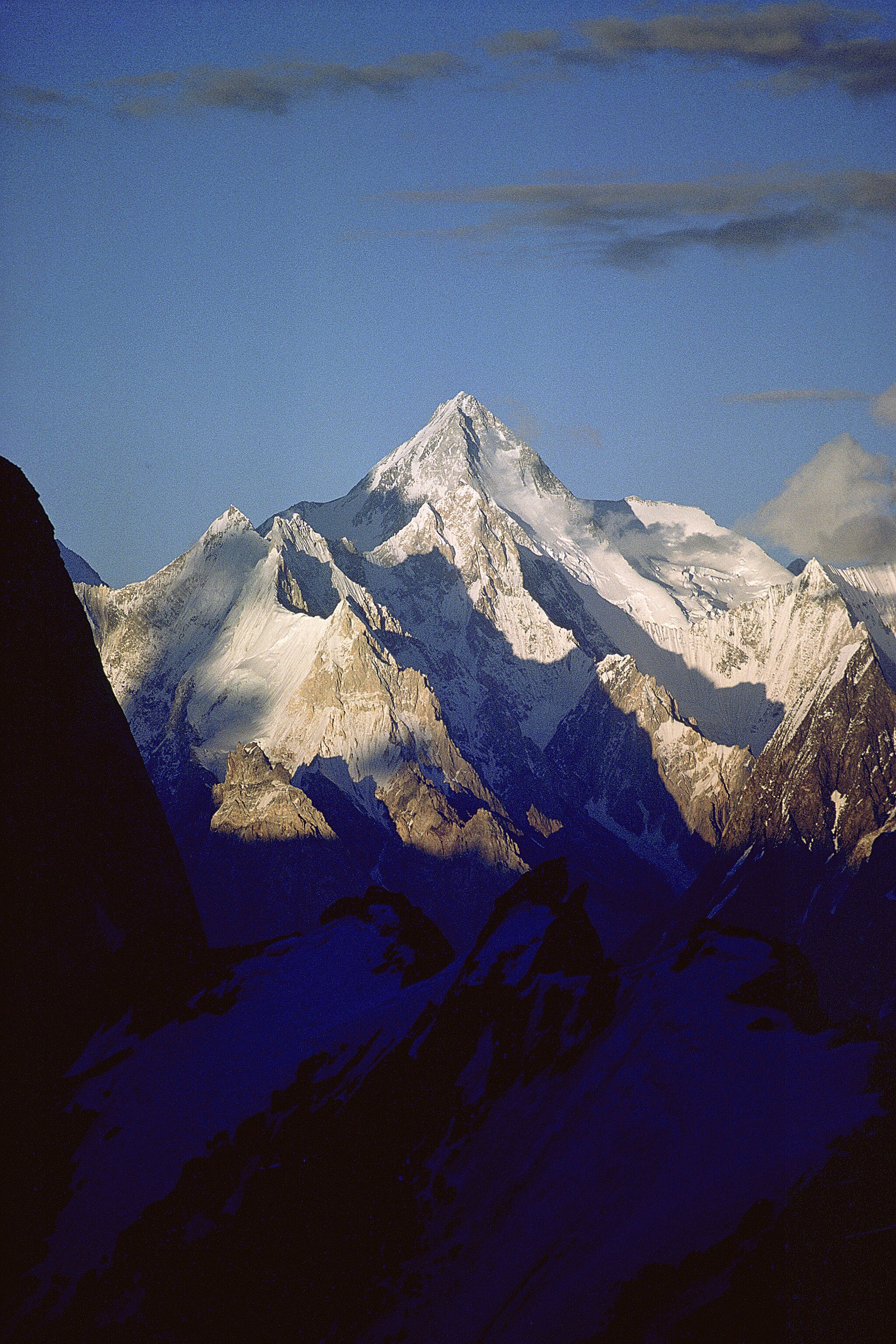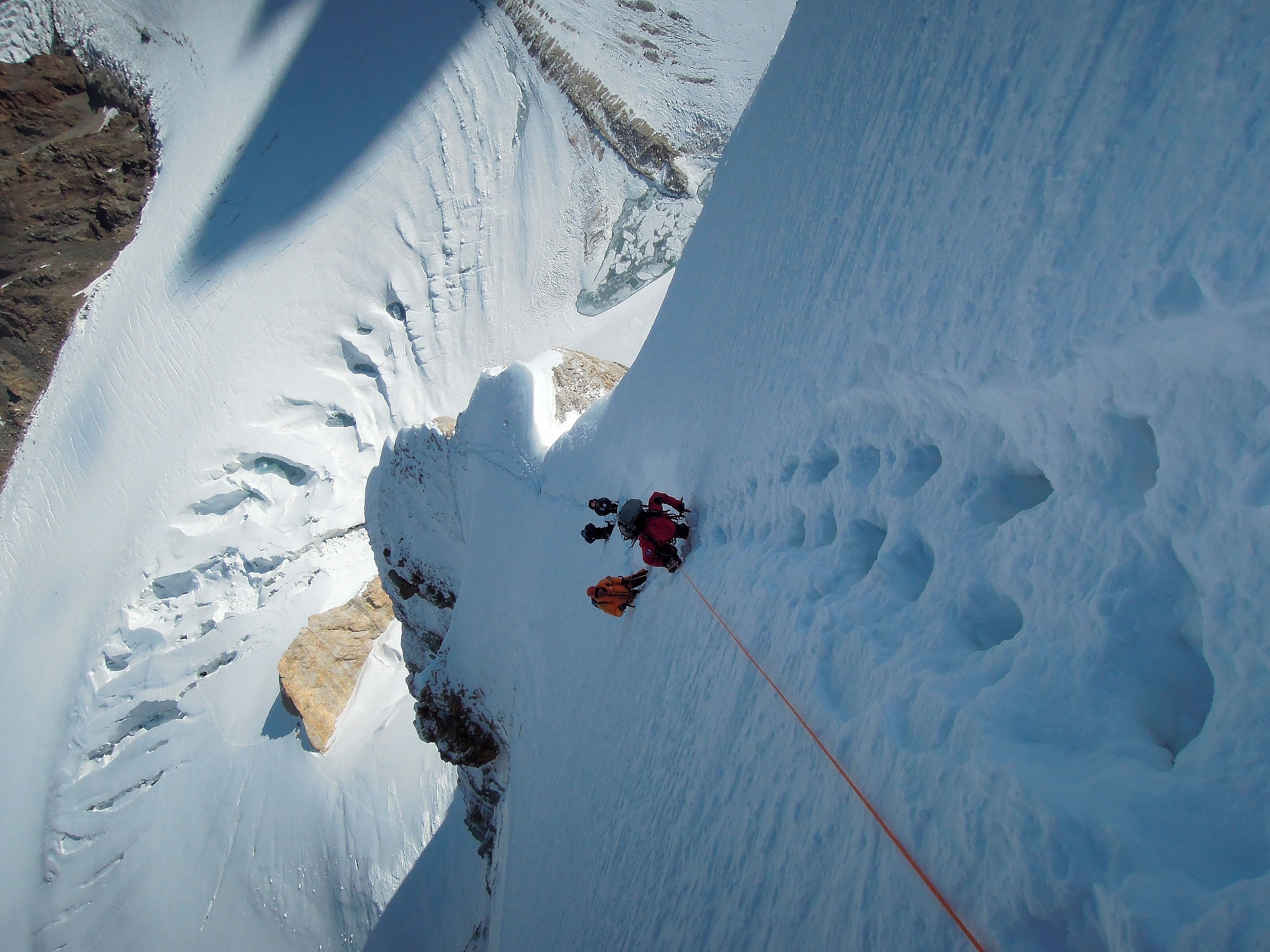
How the pursuit of one European peak gave rise to modern mountaineering
Climbers reached the Matterhorn's summit in 1865—then tragedy struck.
ZERMATT, Switzerland — The summit of the Matterhorn pierces the sky like a medieval spear. Standing on its tip, my crampon points biting into a rim of blue ice, I feel as though I’ve been swallowed by the sky. The plunging emptiness gives way to nearly endless views Switzerland to the north and Italy to the south.
The actual climb to get to the top of this icon is so delicate and difficult—5,000 feet (1,500 meters) of crumbling spires, overhanging walls, and slick, down-sloping ledges strewn with rubble—it’s hard to imagine that the mountain was first climbed exactly 150 years ago.
Long before the world became consumed with Everest, mountain lovers were obsessed with the Matterhorn. At only 14,690 feet (4,477 meters), it’s a runt compared to the super peaks of the Himalaya (barely half as tall as Everest). It isn’t even close to claiming the title as Europe’s tallest mountain, a title claimed by Mount Elbrus in the Russian Caucasus at 18,510 feet (5,642 meters).
It isn’t even the tallest Alp—Mont Blanc is nearly a thousand feet taller and was climbed as early as 1786, owing to its gently sloping incline, which doesn’t require refined technical climbing skills.

Conversely, the Matterhorn rises as an unforgivingly steep pyramid with four ridges and four walls. To climb it you must actually climb—gripping miniscule ripples of rock with your fingertips, placing your feet on the thinnest of ledges, and pulling your body straight up.
The rock is a crumbling gneiss that, combined with the severe angle of incline, forces you to constantly maintain perfect balance, prepared for a hand- or foothold to give way at any moment. It is a mountain that demands climbing competence, courage, and mental stamina.
Because of these factors, climbing historians consider the first ascent of the Matterhorn the beginning of modern mountaineering. And just like Everest, the story of its first ascent is a plot thick with ego and ambition, passion and betrayal, bravery and death.

Race to the Summit
In the mid-1800s, two capable, deeply ambitious men were desperate to become the first to stand on the summit of the Matterhorn: Jean-Antoine Carrel and Edward Whymper.
Carrel had grown up in Valtournenche, a French-speaking town at the base of the Italian side of the Matterhorn. Like his father, Carrel was a professional hunter of the chamois (the region’s goat-like antelope) and had spent his youth exploring every valley and ridgeline of the region’s rugged terrain, including the flanks of the Matterhorn. In 1860, after serving in his region’s military during Italy’s Second War of Independence against Austria, Carrel returned to his home and “his mountain” filled with patriotic ardor and determined to climb the peak. He made his first serious attempt that summer, reaching a height of 12,000 feet (3,658 meters) on what is now known as the Italian Ridge.
Meanwhile, Whymper, an Englishman, also had followed in his father’s professional footsteps and become an artist and wood engraver. In the summer of 1860, when he was 20 years old, Whymper was commissioned by a London publisher to make sketches of the great peaks of the Alps in Switzerland, Italy, and France. It was during this trip when he began to learn mountaineering. He made several first ascents, and he came under the spell of the Matterhorn. From that summer onward, he, too, was determined to become the first to climb that awe-inspiring peak.
The following the summer, in 1861, Whymper tried to hire Carrel as his guide to climb the Matterhorn. “Jean-Antoine…was the finest rock climber I have ever seen,” wrote Whymper later. “He was the only man who persistently refused to accept defeat, and who continued to believe, in spite of all discouragements, that the great mountain was not inaccessible.”
But Carrel was not interested in sharing the certain fame that would be bestowed on the first person to summit the famous peak. As Gaston Rebuffat writes in his book Men and the Matterhorn, “Carrel saw the Matterhorn as a possession belonging to him by right and the attempts of others to win it as an encroachment on his own territory.”
“This monstrous jealousy,” writes Rebuffat, drove the Englishman “to want the conquest to be reserved for him alone.”
Whymper found another guide and set off up the Italian Ridge, only to discover that Carrel was following him. Neither man reached the summit that year, but their race to the top had begun in earnest.
During the ensuing years Whymper made eight unsuccessful attempts to climb the Matterhorn, and on several occasions tried to hire Carrel as his guide.
Finally, in the second week of July in 1865, Whymper encountered Carrel on the trail and once again asked him to be his guide. Carrel declined. Unbeknownst to Whymper, Carrel was quietly mounting his own attempt on the Matterhorn with an Italian team. When Whymper learned that Carrel was trying to steal a march on him he wrote that he felt “bamboozled and humbugged.”
At 1:40 pm the world was at our feet, and the Matterhorn was conquered. Hurrah!Edward Whymper
Determined not to lose the peak to his rival, Whymper managed to cobble together an unwieldy team of seven men of varying experience: Zermatt mountain guides Peter Taugwalder and his son Peter Jr., an accomplished French mountain guide named Michel Croz, an English chaplain Charles Hudson who had much mountain experience, and two novices—18-year-old Lord Francis Douglas and Douglas Hadow, a 19-year-old Londoner.
Instead of attempting the Italian Ridge, they chose a route from the village of Zermatt on the Swiss side, following the Hörnli Ridge. They camped at 8,000 feet (2,438 meters) at Schwarzsee on July 13 and were climbing before dawn the next morning. By 9:55 am they were at nearly 14,000 feet but by then a layer of snow had filled the crevices and thin film of ice had formed over the rock.
Croz, as the most capable and confident in perilous alpine conditions, took the lead. After four more hours of careful, technical climbing, the team was nearing the summit and back on relatively easy terrain. Overwhelmed with excitement, Croz and Whymper detached from the ropes, leaving the others behind. “Then Croz and I, dashing away, ran a neck-and-neck race, which ended in a dead heat,” wrote Whymper. “At 1:40 pm the world was at our feet, and the Matterhorn was conquered. Hurrah!”
But the Matterhorn has two summits: the higher Swiss summit to the east is 14,690 feet, and the Italian summit, to the west, is just four feet lower, at 14,686. So, just to make sure they were indeed the first to the top, the two men crossed over to the Italian summit. When they peered down over the edge, 600 feet below, they spotted Carrel and his team and yelled down to their rivals. Carrel was so distraught he immediately turned around and began descending. (He would return three days later to make the first ascent of the Italian Ridge.)
At that moment, standing on the summit of the most difficult peak ever climbed, Whymper graciously wrote later of Carrel: “He was the man, of all those who attempted the ascent of the Matterhorn, who most deserved to be the first upon the summit.”

A Tragic Fall
Whymper’s team remained on the summit for an hour, and Whymper used the time to sketch the panorama of surrounding peaks.
Then the team roped themselves together, and the guide Michel Croz led the descent. At some point, the least experienced climber, Douglas Hadow, who was in second position, slipped and knocked Croz off his feet. Suddenly both men were tumbling through the air. Hudson and then Lord Francis Douglas were instantly plucked off the mountain. Four men were now falling. Whymper and the two Taugwalders clung to the mountain with all their strength, hoping to catch their teammates, but the rope snapped. The four men fell to their deaths.
The three survivors were so traumatized they could not move for more than half an hour. The Taugwalders wept with despair, the younger sobbing, “We are lost! We are lost!”
Eventually they began to descend, carefully and full of fear. Somehow they managed to keep moving until after dark, finally bivouacking on a thin ledge.
Stumbling back down in Zermatt the next day, the men told their tragic story, but the shock was too great for the small mountain community. Rumors started and Taugwalder Sr. and Whymper were accused of cutting the rope. The Swiss authorities began an inquest that lasted three days. Each man was interviewed at length. In the end, Whymper and Taugwalder were exonerated, but the controversy continued.
The Times of London denounced the ascent and deplored “the utter uselessness” of the sport of mountaineering. Queen Victoria considered outlawing the climbing of mountains. European newspapers published denunciatory editorials by writers who had never set foot on any mountain, let alone the Matterhorn.
For some people, however, spectacular deaths of a supposedly heroic nature seem to have a bizarre magnetism—think Everest—particularly for those who have never witnessed the horror of such events. In Whymper's wake, people from all over Europe suddenly wanted to climb the Matterhorn. In 1871 an English adventuress named Lucy Walker became the first woman to summit the mountain. In 1881, 23-year-old Teddy Roosevelt climbed it. In 1911, the Matterhorn's last remaining unconquered ridge, the Furggen, was ascended, and 20 years later, the north and south faces were climbed.
And mountaineers continue to flock to the Matterhorn, constantly finding new challenges. In May, Swiss climber Dani Arnold broke the six-year-old speed record on the perilous north face, racing up in one hour and 46 minutes, shaving a full 10 minutes off the previous record.
In the Footsteps of Whymper
Denis Burdet, a professional guide with the Swiss gear company Mammut, and I prefer a much more deliberate pace as we retrace the legendary steps of Whymper. During our six-hour ascent and descent of the Hörnli Ridge, I couldn’t help reflect on how monumental an achievement it had been to climb this route 150 years ago.
Both the Italian and Hörnli ridges present far more difficult rock and ice climbing challenges than the routes used by commercial guides to bring clients up Denali, Rainier, and Everest (though the much higher elevations and thinner air on those summits creates other dangers and challenges). And Whymper and Carrel accomplished the feat using hemp ropes and wearing hobnailed leather boots and tweeds.
As we climbed, Burdet explained that for nine years he had been a micro-engineer designing Swiss watches, making a good living, when he gave it all up to climb mountains.
“I was on the wrong side of the window,” said Burdet. “Alpinism is my first passion, and I decided I had to make my passion my job.”
He has since guided on hundreds of peaks and describes his job as primarily one of managing a spectrum of risks, especially with weak or incompetent clients, always calculating, always planning for the worst. Yet he still believes in plain old luck. “You must have good luck. If you are a mountain climber without luck, you must stop.”

And yet bad luck has haunted the Matterhorn since Croz, Hadow, Douglas, and Hudson plummeted to their deaths. Today, exactly 150 years since their deaths and also since the first ascent, tens of thousands have climbed the Matterhorn, and more than 500 have died trying—more than on Everest, Denali, and Rainier combined.
After my climb with Burdet, I walked through the Zermatt cemetery, which serves as the graveyard of the Matterhorn. There are tombstones with ice axes and ropes carved into the rock, tombstones with actual axes and crampons bolted onto the stone, even a tombstone in which a crucified Christ is adorned as a climber, axe and rope hanging from his body.
Here the graves of arrogant and unprepared climbers lie side-by-side with seasoned guides who also perished on the mountain. The Matterhorn, like all mountains, is indiscriminate.
Jean-Antoine Carrel perished in a blizzard on the Matterhorn in 1890 but is notably absent. His final resting place is Valtournenche, on the Italian side of the mountain.

The Birth of Mountain Culture
As much as the first ascent of the Matterhorn changed mountaineering, it also changed mountain culture. Whymper’s book about his first ascent, Scrambles Amongst the Alps, published in 1871, became a worldwide bestseller, and tourists began to flock to Switzerland in summer. The vast majority were not climbers, they simply wanted to journey up the valleys to see these extraordinary peaks and often hired local shepherds and hunters to guide them. With the advent of alpine skiing in the early 20th century, tourists began traveling to Switzerland in winter, giving the country a year-round tourism industry.
As a result, mountaineering, at least in part, helped transform Switzerland’s mountain regions from impoverished rural backwaters to prime tourist destinations. Subsequently, this recipe for success was transplanted to the western United States, begetting Sun Valley, Vail, Jackson Hole, as well as numerous other mountain towns around world, from Nepal to Peru, Pakistan to Patagonia.
To mark the sesquicentennial of Whymper’s bold climb of the Matterhorn, Zermatt will hold an array of events, including a play re-enacting the climb and subsequent tragedy, a roster of speakers on mountain culture and climbing, and numerous parties that will last well into the night—and for good reason. The first ascent of the Matterhorn not only changed mountaineering, it changed the very mountains themselves.
Mark Jenkins is writer in residence at the University of Wyoming and a regular contributor to National Geographic.
You May Also Like
Go Further
Animals
- How can we protect grizzlies from their biggest threat—trains?How can we protect grizzlies from their biggest threat—trains?
- This ‘saber-toothed’ salmon wasn’t quite what we thoughtThis ‘saber-toothed’ salmon wasn’t quite what we thought
- Why this rhino-zebra friendship makes perfect senseWhy this rhino-zebra friendship makes perfect sense
- When did bioluminescence evolve? It’s older than we thought.When did bioluminescence evolve? It’s older than we thought.
- Soy, skim … spider. Are any of these technically milk?Soy, skim … spider. Are any of these technically milk?
Environment
- Are the Great Lakes the key to solving America’s emissions conundrum?Are the Great Lakes the key to solving America’s emissions conundrum?
- The world’s historic sites face climate change. Can Petra lead the way?The world’s historic sites face climate change. Can Petra lead the way?
- This pristine piece of the Amazon shows nature’s resilienceThis pristine piece of the Amazon shows nature’s resilience
- Listen to 30 years of climate change transformed into haunting musicListen to 30 years of climate change transformed into haunting music
History & Culture
- Meet the original members of the tortured poets departmentMeet the original members of the tortured poets department
- Séances at the White House? Why these first ladies turned to the occultSéances at the White House? Why these first ladies turned to the occult
- Gambling is everywhere now. When is that a problem?Gambling is everywhere now. When is that a problem?
- Beauty is pain—at least it was in 17th-century SpainBeauty is pain—at least it was in 17th-century Spain
Science
- Here's how astronomers found one of the rarest phenomenons in spaceHere's how astronomers found one of the rarest phenomenons in space
- Not an extrovert or introvert? There’s a word for that.Not an extrovert or introvert? There’s a word for that.
- NASA has a plan to clean up space junk—but is going green enough?NASA has a plan to clean up space junk—but is going green enough?
- Soy, skim … spider. Are any of these technically milk?Soy, skim … spider. Are any of these technically milk?
Travel
- Dina Macki on Omani cuisine and Zanzibari flavoursDina Macki on Omani cuisine and Zanzibari flavours
- How to see Mexico's Baja California beyond the beachesHow to see Mexico's Baja California beyond the beaches
- Could Mexico's Chepe Express be the ultimate slow rail adventure?Could Mexico's Chepe Express be the ultimate slow rail adventure?



















